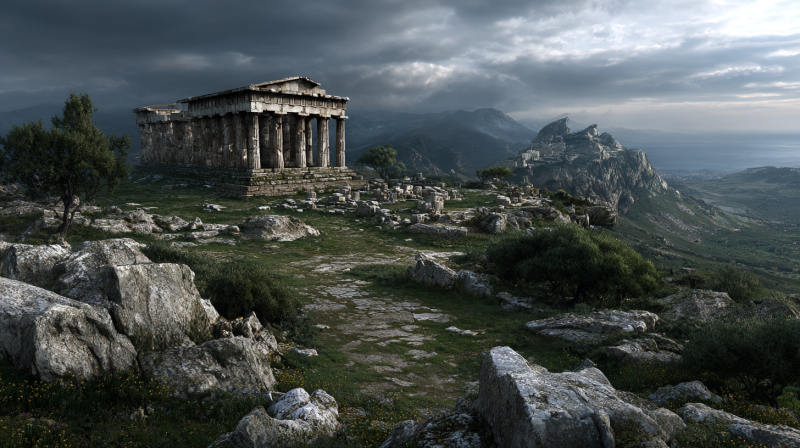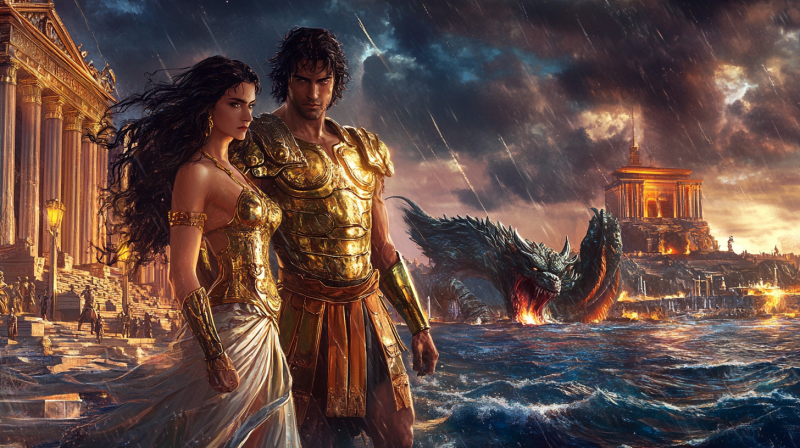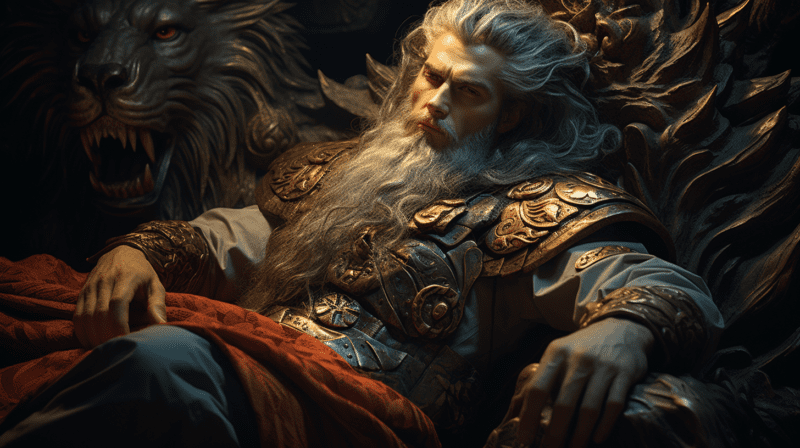The myth of Demeter and Persephone is one of the most compelling stories from ancient Greek mythology, weaving a rich tapestry of themes that delve into the natural cycles of life and death, the bond between mother and daughter, and the delicate balance between the worlds of the living and the dead. This myth, which has influenced art, literature, and philosophy for millennia, continues to resonate with modern audiences due to its timeless exploration of human and natural phenomena.
The Genesis of the Myth
The story begins with Demeter, the goddess of the harvest and agriculture, who is revered for her power to bring forth abundance from the earth. Her daughter, Persephone, also known as Kore (the maiden), is a symbol of springtime and the bountiful beauty of nature. Together, they represent the earth’s fertility and the renewal that comes with each season.
Persephone’s beauty catches the eye of Hades, the god of the underworld. Enamored with her, Hades devises a plan to abduct her to be his queen. One day, as Persephone gathers flowers in a meadow, the ground suddenly opens up beneath her, and Hades emerges in his chariot to seize her and take her to his dark realm.
This act of abduction sets into motion a chain of events that leads to one of the most poignant and powerful narratives in Greek mythology.
Demeter’s Grief and the Earth’s Barren Winter
When Demeter realizes that her daughter is missing, she is overcome with grief. She roams the earth in search of Persephone, neglecting her divine duties. The fields, once lush and green, wither and die; the earth becomes barren. In her sorrow, Demeter forbids the earth to produce, causing a great famine that threatens the survival of humanity.
The significance of this myth lies in its symbolic representation of the changing seasons. Demeter’s sorrow mirrors the winter months, when the earth seems lifeless and infertile. Her search for Persephone represents the longing and anticipation for the return of spring.
The Intervention of the Gods
The plight of humanity does not go unnoticed. Zeus, the king of the gods and Persephone’s father, becomes aware of the crisis and realizes that the balance of the natural world must be restored. He sends Hermes, the messenger god, to the underworld to negotiate Persephone’s release.
Hades, however, is reluctant to let Persephone go. In a cunning move, he offers her a pomegranate. Unbeknownst to Persephone, consuming food from the underworld binds her to it. She eats six seeds, sealing her fate.
The Compromise
A compromise is reached: Persephone will spend part of the year with Hades in the underworld and the remainder with Demeter on the earth’s surface. Thus, the cycle of the seasons is established. When Persephone is in the underworld, Demeter’s grief causes winter, a time when the earth lies dormant. When Persephone returns, Demeter’s joy brings about the spring and summer, a period of growth and renewal.
This cyclical journey of Persephone between the realms of life and death is symbolic of the perpetual cycle of nature. The earth’s fertility is intimately linked with the divine narrative, illustrating the Greeks’ understanding of life’s rhythms.
The Eleusinian Mysteries
The myth of Demeter and Persephone was central to the Eleusinian Mysteries, a set of ancient religious rites held annually in the town of Eleusis. These mysteries were among the most significant religious festivals in ancient Greece and were shrouded in secrecy. Initiates believed that participation in these rites ensured them a more favorable afterlife.
The Eleusinian Mysteries highlighted the themes of death and rebirth, reflecting the myth’s profound impact on Greek spirituality. The rituals, which included fasting, purification, and a reenactment of the myth, sought to connect participants with the divine and impart a deeper understanding of life’s mysteries.
Persephone: The Queen of the Underworld
Persephone’s role in the underworld is not merely that of a captive. Over time, she becomes a powerful and respected queen, ruling alongside Hades. Her dual role as both the bringer of spring and the queen of the dead underscores the myth’s exploration of life’s dualities.
As the queen of the underworld, Persephone presides over the souls of the dead, offering them solace and a measure of peace. Her presence in the underworld is a reminder of the interconnectedness of life and death. Her annual return to the surface symbolizes the hope and renewal that follow periods of darkness and despair.
Modern Interpretations and Cultural Impact
The Demeter-Persephone myth has left an indelible mark on Western culture, influencing art, literature, and psychology. In literature, the story has been reimagined in countless ways, from ancient plays to contemporary novels. Poets like Ovid and Homer have immortalized the myth in their works, while modern authors continue to draw inspiration from its rich symbolism.
In art, the myth has been depicted in various forms, from classical sculptures to Renaissance paintings. Artists have explored the emotional depth of the narrative, capturing the anguish of Demeter, the innocence of Persephone, and the dark allure of Hades.
Psychologically, the myth has been interpreted through the lens of psychoanalysis. Carl Jung, for instance, viewed the story as an allegory of the individuation process, where Persephone’s descent into the underworld represents the journey into the unconscious and her return symbolizes the integration of these hidden aspects into the conscious self.
The Feminine Divine
The myth also underscores the power and complexity of the feminine divine in Greek mythology. Demeter and Persephone embody different aspects of womanhood: Demeter as the nurturing mother and Persephone as the maiden who transitions into a powerful queen. Their relationship highlights the strength and resilience of women, as well as the profound bonds that connect them.
This exploration of the feminine divine has resonated with feminist scholars and writers, who see in Demeter and Persephone’s story a reflection of women’s experiences and struggles. The myth’s emphasis on female agency and transformation continues to inspire discussions about gender and power.
Nature’s Eternal Cycle
At its core, the Demeter-Persephone myth is a profound reflection on the natural cycles that govern our world. The story illustrates the inevitability of change and the interdependence of life and death. It reminds us that periods of darkness and loss are followed by renewal and growth, mirroring the seasonal rhythms that sustain life on earth.
In a broader sense, the myth speaks to the human condition. It addresses themes of loss, longing, and hope, capturing the emotional highs and lows that define our existence. Through the lens of this ancient narrative, we gain a deeper understanding of the forces that shape our lives and the world around us.
The myth of Demeter and Persephone is a timeless tale that continues to captivate and inspire. Its exploration of the cycle of life and death, the bond between mother and daughter, and the delicate balance between the worlds of the living and the dead offers profound insights into the human experience. Through this ancient story, we are reminded of the enduring power of myth to illuminate the mysteries of life and connect us to the natural world.
References
- Burkert, Walter. “Greek Religion.” Harvard University Press, 1985.
- Kerenyi, Karl. “Eleusis: Archetypal Image of Mother and Daughter.” Princeton University Press, 1967.
- Ovid. “Metamorphoses.” Translated by A. D. Melville. Oxford University Press, 1986.
- Jung, Carl G. “The Archetypes and the Collective Unconscious.” Princeton University Press, 1981.
- Homer. “The Homeric Hymns.” Translated by Jules Cashford. Penguin Classics, 2003.





